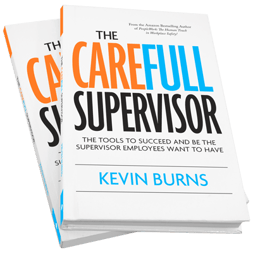In the world of workplace safety, there's a common misconception that to create a safety culture, you need buy-in from every single employee. This approach, while well-intentioned, often leads to frustration and slow progress. What if I told you that you're overthinking it?

What if the key to transforming your company's safety culture lies not in convincing everyone, but in focusing on a crucial 10%? Let's explore why shifting your focus to frontline supervisors could be the game-changer your safety program needs.
Influencing The Influential
Supervisors are the key to transforming your company's safety culture. Three crucial concepts highlight supervisors' outsized impact on workplace safety and organizational culture.
Understanding these principles will help you shift your approach from convincing everyone to strategically influencing the influential. You'll see why investing in your frontline supervisors' safety leadership is not just smart—it's essential for creating lasting change.
-
The Power of the 10%
Research from Rensselaer Polytechnic Institute, highlighted in Malcolm Gladwell's "The Tipping Point," suggests that you only need about 10% of a population to embrace an idea for it to spread and become the norm.
In the context of workplace safety, this means concentrating your efforts on a key group rather than trying to win over every individual.
Who should be this crucial 10%? Your frontline supervisors. These individuals are the linchpin of your organization, bridging the gap between management and workers. They're the ones who shape the day-to-day reality of your workplace culture.
-
Supervisors: The High School Test for Employees
Remember being in high school and asking, "Will this be on the test?" As students, we quickly learned to prioritize what our teachers emphasized. The same principle applies in the workplace, with supervisors playing the role of the teacher.
Frontline supervisors are, in essence, "the test" for employees. Whatever supervisors prioritize becomes what employees focus on.
If a supervisor consistently emphasizes safety, checks equipment, and follows procedures, employees will internalize that these actions are important. On the flip side, if a supervisor cuts corners or downplays safety measures, employees will likely follow suit.
This influence extends beyond just safety. Supervisors shape attitudes about work quality, punctuality, teamwork, and even how employees view the company as a whole. Most of what employees know and feel about their workplace is filtered through their relationship with their immediate supervisor.
-
Employees Mirror Their Bosses
"What's important to my boss is important to me." This sentiment encapsulates how employees approach their work. They look to their supervisors for cues on what truly matters in the workplace.
If a supervisor grumbles about new safety procedures, employees are likely to adopt a similar attitude. If a supervisor enthusiastically embraces safety initiatives, employees are more inclined to do the same. This mirroring effect is powerful and pervasive.
It's not just about what supervisors say, but what they do. Actions speak louder than words, and employees are always watching. If a supervisor consistently wears proper PPE, employees are more likely to follow suit without the need for constant reminders.
The Takeaways
Let's review the key points that will help you refocus your company's safety efforts and leverage the power of your frontline supervisors:
- Focus on winning over your frontline supervisors to create a tipping point for safety culture change.
- Recognize that supervisors are "the test" for employees, setting the standard for what's truly important in the workplace.
- Understand that employees will mirror their supervisors' attitudes and behaviors, making supervisor buy-in crucial for any safety initiative.
Leverage the Influence
Now that you understand the influence supervisors have over employee behavior, don't you want to leverage it by setting up your supervisors for success?
Shifting your focus to frontline supervisors doesn't mean neglecting the rest of your workforce. Instead, it's about leveraging the natural influence these key players have within your organization.
By investing in your supervisors' safety leadership skills and commitment, you're setting the stage for a broader cultural shift. Remember, creating a safety-first culture isn't about convincing everyone all at once—it's about empowering the right people to lead by example.
For frontline supervisors looking to enhance their safety leadership skills and overall effectiveness, Kevin's latest book "The CareFull Supervisor" offers valuable insights and strategies to become the kind of leader who not only prioritizes safety but inspires others to do the same.


